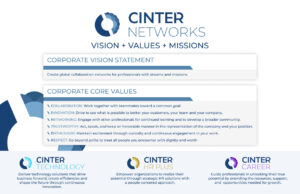
In today’s fast-paced digital landscape, businesses rely heavily on their IT infrastructure to operate smoothly and serve their customers effectively. However, with the increasing frequency and complexity of cyber threats, natural disasters, and other unforeseen disruptions, the risk of IT system failures and data loss has never been higher. In such turbulent times, having a robust IT disaster recovery plan is not just advisable, it’s essential for ensuring business continuity and resilience.
Understanding IT Disaster Recovery Planning
IT disaster recovery planning is a proactive approach to prepare for and respond to disruptive incidents that could impact IT systems, applications, and data. The primary goal is to minimize downtime, mitigate data loss, and restore normal operations swiftly to avoid significant financial and reputational damage.
Key Components of Effective IT Disaster Recovery Planning
- Risk Assessment: Begin by conducting a comprehensive risk assessment to identify potential threats and vulnerabilities to IT systems and data. Evaluate factors such as cyber threats, natural disasters, hardware failures, and human errors to prioritize mitigation efforts effectively.
- Business Impact Analysis: Determine the criticality of IT systems and applications to business operations. Assess the potential financial and operational impacts of IT disruptions to prioritize recovery efforts and allocate resources accordingly.
- Backup and Data Protection: Implement robust backup and data protection measures to safeguard critical business data. Regularly backup data, store it securely off-site, and employ encryption and data replication to ensure data integrity and availability in the event of a disaster.
- Testing and Maintenance: Regularly test and validate the IT disaster recovery plan through simulated exercises and drills. Identify weaknesses, refine procedures, and update the plan accordingly to ensure its effectiveness. Maintenance is key to keeping technology and processes up to date in response to evolving threats and business requirements.
- Documentation and Communication: Document the IT disaster recovery plan comprehensively, including roles and responsibilities, procedures, contact information, and recovery workflows. Ensure clear communication channels and coordination among stakeholders to facilitate a cohesive response in times of crisis.
In today’s volatile business landscape, the ability to recover swiftly from IT disruptions is critical for maintaining operational continuity and competitiveness. By prioritizing IT disaster recovery planning, organizations can mitigate risks, protect valuable assets, and ensure uninterrupted operations in the face of adversity. Proactive preparation is the key to resilience. Invest in robust IT disaster recovery planning today to safeguard your business for tomorrow’s challenges.
At Cinter Technology, we understand the critical importance of IT disaster recovery planning for businesses of all sizes and industries. Contact us today to learn more about how we can assist you in safeguarding your business against potential IT disruptions and ensuring continuity in challenging times.
Interested in learning more about Cinter Technology and how our services can help your business?


